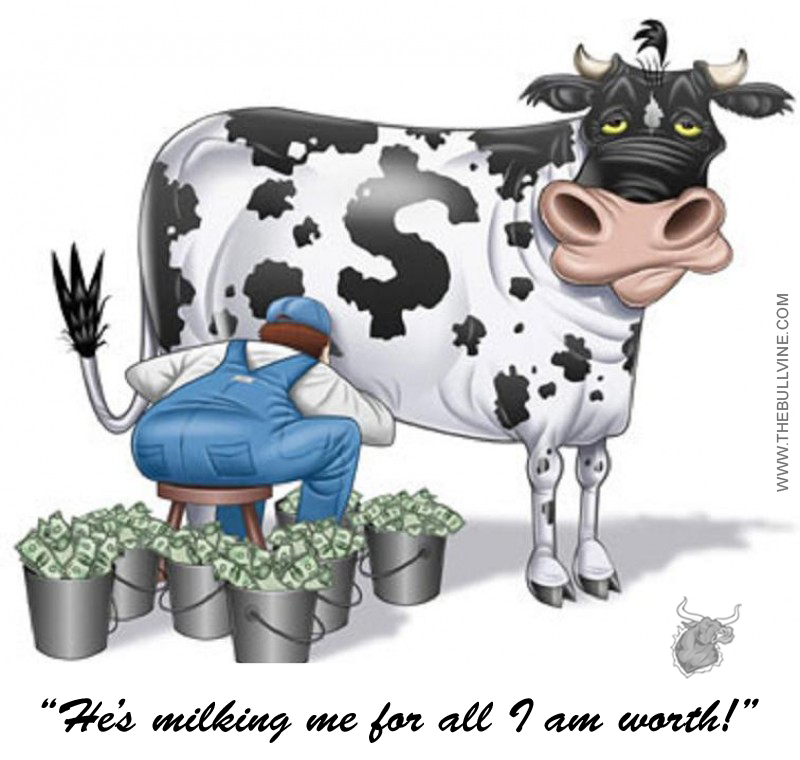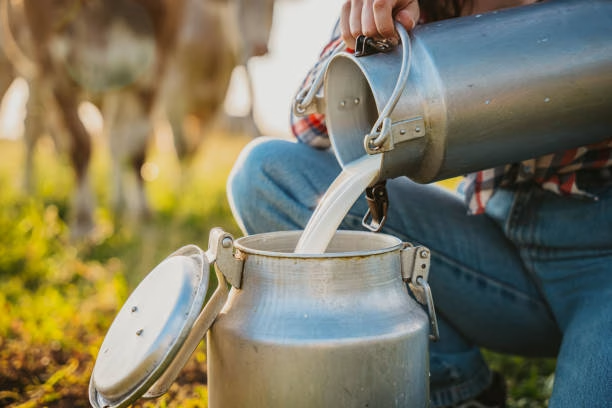Strengthen your dairy farm team with innovative immigration solutions. Ready to fill those vital roles and boost productivity? Learn more now.
Imagine arriving at your dairy farm on a crisp, early morning and seeing half of your typical team absent. This situation is becoming all too typical. According to the National Milk Producers Federation, immigrants account for 51% of all dairy-producing positions. Do you need help finding dependable labor for your dairy farm? If so, you are not alone. Securing a stable and trustworthy staff is essential to the continued success of your organization. After all, cows do not wait. However, getting trustworthy labor has never been more challenging. “The labor shortage in the dairy industry is one of the most severe in today’s agricultural sector,” said former Secretary of Agriculture Tom Vilsack. Here’s where immigration solutions come into play. Could tapping into this labor pool be the solution to your workforce issues? In this post, we’ll look at how changing your approach to immigration might help you cover team shortages and bring new opportunities and efficiencies to your dairy operations.
Is Your Dairy Farm Prepared to Confront the Urgent Labor Crisis?
Understanding the dairy industry’s manpower problem paints a grim picture. According to the National Milk Producers Federation, over half of dairy workers are immigrants. This heavy reliance on foreign labor carries significant implications. Recent estimates suggest that reducing undocumented workers could lead to a 3.4 to 5.5 percent decrease in the total farmworker population.
Furthermore, the Economic Research Service (ERS) employed a computable general equilibrium (CGE) model to assess the effect on the U.S. economy under several scenarios. They discovered that the amount of unlicensed farmworkers engaged might fall between 34.1 and 38.8 percent, resulting in a severe bottleneck for dairy operations. Moreover, the total GDP for US-born and foreign-born permanent residents would shrink by around 1% [ERS study], a significant blow to the economy.
The Ripple Effects of Labor Shortages on Your Dairy Farm
This scarcity substantially affects both production and profitability. Imagine attempting to reach production targets with a skeleton crew—it is unsustainable. Dairy farming depends significantly on steady, dependable labor to keep things running smoothly. With a significant reduction in available personnel, the remaining employees face greater responsibilities, resulting in burnout and decreased productivity.
Furthermore, productivity can improve when sufficient hands do everyday activities. Operational delays are unavoidable, slowing down procedures like milking, feeding, and maintenance. This impacts not just milk output but also your livestock’s general health and well-being, which we all care deeply about and should be a top priority for any dairy farm owner. This may have long-term implications for productivity.
Profitability is also negatively impacted. When productivity declines, revenue falls. You may consider recruiting more American-born employees, but let’s be honest—there’s a reason we’re talking about immigrant labor. Domestic laborers are often less interested in agricultural work, and even when they are, they typically expect more excellent compensation than their foreign colleagues.
The National Milk Producers Federation emphasizes that the financial health of many dairy farms depends on the availability of foreign labor. When labor expenses rise, or labor is difficult to obtain, profitability suffers. For smaller farmers, this may be the difference between remaining afloat and falling under.
Given these issues, adopting a proactive approach to identifying sustainable immigration solutions is more than simply a ‘nice to have’; it is crucial for your farm’s future success.
Why Immigrant Labor Is the Backbone of American Dairy Farms
Have you ever wondered why so many dairy farms use foreign workers? It’s not just about filling vacancies, but it is essential. Immigrant labor provides a consistent workforce, which is rarer in today’s labor market. Immigrants account for more than half of all dairy workers in the United States, and they are critical to the seamless operation of our farms.
Beyond dependability, consider the different skill sets that immigrants bring. Many have substantial histories in agriculture, animal husbandry, and farm management, bringing considerable expertise and information from their native countries. This variety may result in new methods and a more resilient agricultural enterprise.
Then there’s the prospect of long-term work. Immigrant laborers often want secure, long-term employment, which dairy farms need. This consistency decreases turnover and assures the continuance of agricultural activities. Have you thought about these advantages for your farm? If so, it may be time to reconsider how immigration solutions might benefit your team.
The Economic Powerhouse: Immigrant Workers on Dairy Farms
The economic advantages of employing immigrants speak for themselves. According to the American Farm Bureau Federation, immigrant labor considerably increases agricultural production and economic development [source: AFBF]. Immigrants make up more than half of the workers on dairy farms, accounting for 79% of total milk output.
This dependence on foreign labor is more than simply filling roles; it is also about ensuring the farm’s economic survival. Immigrant labor allows farms to sustain better production levels, which influences profitability. The present national labor deficit has resulted in 4.5 to 7.0 percent increases in meat and dairy costs, highlighting the critical need for a steady workforce.
Furthermore, integrating immigrant labor provides access to a diverse skill set, with many bringing specific expertise and experience that may increase operational efficiency. Immigrant workers on dairy farms have an economic impact beyond their direct jobs; they support local economies by spending locally and paying state and federal taxes, which feeds back into the community’s economic development.
Unlocking the Potential: Immigration Solutions to Support Your Dairy Farm Team
When contemplating immigration alternatives to staff your dairy farm, it is critical to understand the various programs and visas available. Here are some options that can specifically benefit dairy farms:
H-2A Temporary Agricultural Workers Program
The H-2A program permits firms in the United States to hire foreign nationals to fill temporary agricultural occupations. Dairy producers may gain considerably from this scheme, particularly during peak seasons when labor demand increases. However, companies must demonstrate that there are insufficient U.S. workers to fulfill demand and that hiring H-2A workers would not negatively impact the pay and working conditions of similarly employed U.S. workers.
EB-3 Visas
The EB-3 visa may be a long-term option for dairy farms seeking skilled or unskilled labor. It enables companies to sponsor foreign nationals for permanent residence, which may be especially useful for dairy farms trying to retain experienced employees. Unlike the H-2A visa, the EB-3 visa is permanent, offering more stability for the business and the employee.
Other Relevant Pathways
Temporary Protected Status (TPS)
- TPS is a humanitarian program that provides temporary legal status to citizens of certain nations devastated by war or catastrophe. This status permits beneficiaries to work legally in the United States, potentially increasing the labor pool for dairy farms.
DACA (Deferred Action for Childhood Arrivals)
- DACA participants, sometimes called “Dreamers,” may work lawfully in the United States. Dairy farms may profit from recruiting these young people who have assimilated into American culture.
Seasonal Worker Visa Pilot Programs
- The government periodically creates pilot projects to solve particular workforce shortages. These programs may provide temporary or seasonal job alternatives, ideal for dairy farm businesses with varying labor requirements.
Get Proactive: Mastering Immigration Compliance for Your Dairy Farm’s Success
Understanding the legal environment may be difficult when employing foreign labor for your dairy farm. However, complying with immigration rules and regulations is more than a legal requirement; it’s also a strategic decision to safeguard your company from possible penalties and interruptions.
To determine which choices best meet your labor requirements, begin by being acquainted with the different visa programs, such as the H-2A, EB-3, TPS, and DACA. Each route has unique qualifying requirements and application procedures that might be complicated and time-consuming. Maintaining thorough records and documentation from the start may help avoid future issues.
Consulting with an immigration attorney or specialist is quite beneficial in this situation. These specialists can assist you in navigating the complexity of the application process, ensure that you satisfy all legal requirements, and prevent expensive errors. An attorney may also keep you informed of any changes in immigration regulations that may affect your staff, giving you peace of mind while enabling you to concentrate on operating your farm.
Remember that compliance protects your farm and provides a climate where your immigrant workers’ contributions are valued and respected. Investing time and resources to do it properly is an investment in your farm’s long-term prosperity.
A Step-by-Step Guide to Navigating the Immigration Process for Your Dairy Farm
Navigating the immigration process may be intimidating, but breaking it down into distinct phases makes it more doable. Here’s a step-by-step guide to help you get started:
- Evaluate Your Needs: Determine the precise labor needs for your dairy farm. Consider the time, the quantity of personnel required, and the sort of job they will do.
- Select the Appropriate Visa Program: Determine which one best meets your requirements. For example, the H-2A visa is intended for temporary agricultural laborers. Alternatively, the EB-3 visa may be more suitable for permanent work.
- Gather Required Documentation: Prepare necessary paperwork such as verification of labor requirements, farm registration, and financial reports. Ensure that every documentation meets the relevant visa criteria.
- File a Petition: To apply for the H-2A program, submit a Form I-129, Petition for a Nonimmigrant Worker, to the United States Citizenship and Immigration Services. To get an EB-3 visa, you must complete Form I-140, Immigrant Petition for Alien Worker.
- Obtain Certification from the Department of Labor (DOL): Before submitting some petitions, such as the H-2A, you must acquire a temporary labor certification from the DOL indicating that there are insufficient U.S. workers who are able, willing, and competent to do the job.
- Submit the Visa Application: Workers must apply for a visa at a United States embassy or consulate after the petition is authorized. They must attend an interview and present any necessary extra papers.
- Stay Compliant with Immigration Laws: Comply continuously with immigration rules, including record-keeping and reporting obligations. Check the USCIS and DOL websites often for changes in regulations and processes.
For more detailed guidance, refer to the official resources:
Bridging Barriers: Making Immigrant Integration a Success on Your Dairy Farm
Hiring immigrant labor for your dairy farm may be transformative but presents unique problems. Have you ever had difficulty communicating due to language difficulties or cultural differences?
Many farmers face considerable challenges due to linguistic barriers. One viable alternative is to provide language training on-site or collaborate with local educational institutions. Furthermore, applications and translation tools may provide quick aid with everyday encounters.
Have you considered how cultural differences might influence team dynamics? Understanding and accepting cultural differences may have a significant impact. Organizing cultural sensitivity training for your employees may have a considerable effect. These seminars help all workers recognize their colleagues’ backgrounds, creating a more inclusive work environment.
Integration with the local community is another critical factor. Have you had any difficulties in making your foreign staff feel at home? Encouraging involvement in community activities and providing chances for social contact may assist in closing the gap. Mentorship programs, in which recruits are partnered with more experienced employees, may also help smooth the move.
Have you faced these issues on your farm? What tactics have you used to overcome them? Sharing your experiences may help other dairy producers navigate similar difficulties.
The Bottom Line
We’ve discussed the serious problem of labor shortages on dairy farms and the critical role immigrant workers play in supporting the sector. The H-2A Temporary Agricultural Workers Program and EB-3 Visas are two essential answers to this problem, along with other pertinent paths such as TPS, DACA, and seasonal worker visa pilot programs. Proactively mastering immigration compliance and promoting immigrant integration may help your farm thrive.
Can you afford to pass up this chance to boost your workforce? Consider the possible influence on your farm’s production and agricultural sector.
Take the first step now: Contact an immigration specialist or research particular visa options to see which are ideal for your farm. This decision might be critical to the future of your firm.
Key Takeaways:
- The labor crisis is a pressing issue for dairy farms, demanding immediate attention and solutions.
- Labor shortages significantly impact productivity, operational costs, and farm sustainability.
- Immigrant labor plays a crucial role in maintaining the operations and success of American dairy farms.
- Utilizing immigration programs like H-2A and EB-3 visas can help fill labor gaps on dairy farms.
- Alternative pathways, such as TPS, DACA, and seasonal worker visa pilot programs, offer additional support.
- Maintaining compliance and mastering immigration regulations are vital for farm success and stability.
- Integrating immigrant workers effectively can enhance team cohesion and operational efficiency.
Summary:
Are you grappling with labor shortages on your dairy farm? You’re not alone. This article delves into viable immigration solutions to help you fill your farm team, unlock economic potential, and ensure long-term success. With labor shortages posing a critical challenge to dairy farming, leveraging immigrant labor becomes not only a practical solution but a necessary one. We’ll explore programs like H-2A and EB-3 visas and other pathways, such as DACA and Temporary Protected Status (TPS), to help you navigate these options effectively. From practical tips on compliance to integrating immigrant workers seamlessly, this guide offers a comprehensive look at how to proactively address labor shortages and build a robust, dedicated team. The financial health of many dairy farms depends on the availability of foreign labor, emphasizing the importance of consulting with an immigration attorney or specialist to navigate the application process, ensure compliance with legal requirements, and prevent costly errors.
Learn more:
- The Impact of Mass Deportations on America’s Dairy Industry: Who Will Milk the Cows?
- American Dairy Farmers Grapple with Trade War and Immigration Policies: The Fight to Stay Afloat
- 7 Game-Changing Strategies to Skyrocket Customer Engagement When Marketing to Dairy Farmers
 Join the Revolution!
Join the Revolution!
Bullvine Daily is your essential e-zine for staying ahead in the dairy industry. With over 30,000 subscribers, we bring you the week’s top news, helping you manage tasks efficiently. Stay informed about milk production, tech adoption, and more, so you can concentrate on your dairy operations.







 Join the Revolution!
Join the Revolution!











